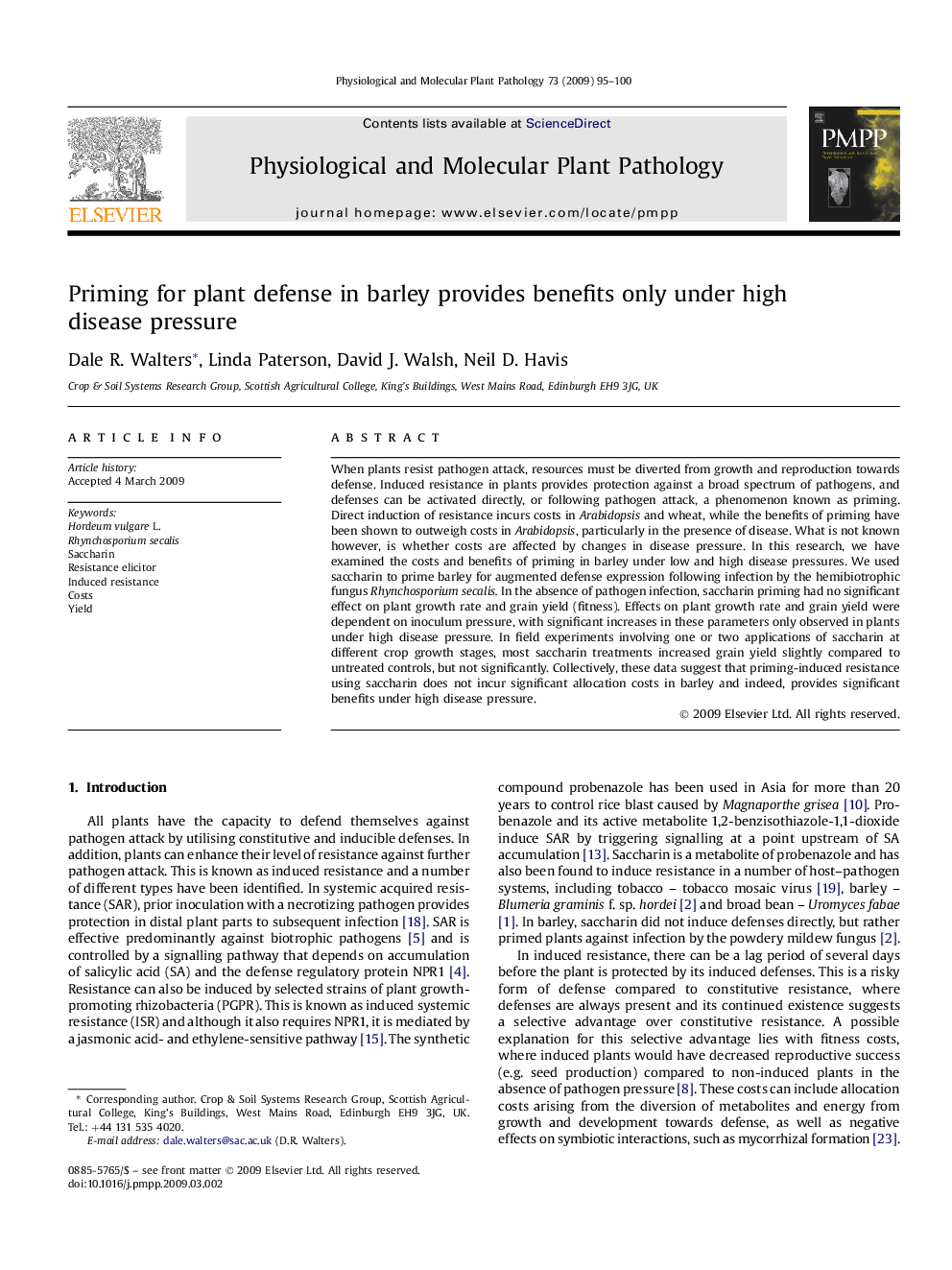| Article ID | Journal | Published Year | Pages | File Type |
|---|---|---|---|---|
| 2836633 | Physiological and Molecular Plant Pathology | 2008 | 6 Pages |
When plants resist pathogen attack, resources must be diverted from growth and reproduction towards defense. Induced resistance in plants provides protection against a broad spectrum of pathogens, and defenses can be activated directly, or following pathogen attack, a phenomenon known as priming. Direct induction of resistance incurs costs in Arabidopsis and wheat, while the benefits of priming have been shown to outweigh costs in Arabidopsis, particularly in the presence of disease. What is not known however, is whether costs are affected by changes in disease pressure. In this research, we have examined the costs and benefits of priming in barley under low and high disease pressures. We used saccharin to prime barley for augmented defense expression following infection by the hemibiotrophic fungus Rhynchosporium secalis. In the absence of pathogen infection, saccharin priming had no significant effect on plant growth rate and grain yield (fitness). Effects on plant growth rate and grain yield were dependent on inoculum pressure, with significant increases in these parameters only observed in plants under high disease pressure. In field experiments involving one or two applications of saccharin at different crop growth stages, most saccharin treatments increased grain yield slightly compared to untreated controls, but not significantly. Collectively, these data suggest that priming-induced resistance using saccharin does not incur significant allocation costs in barley and indeed, provides significant benefits under high disease pressure.
